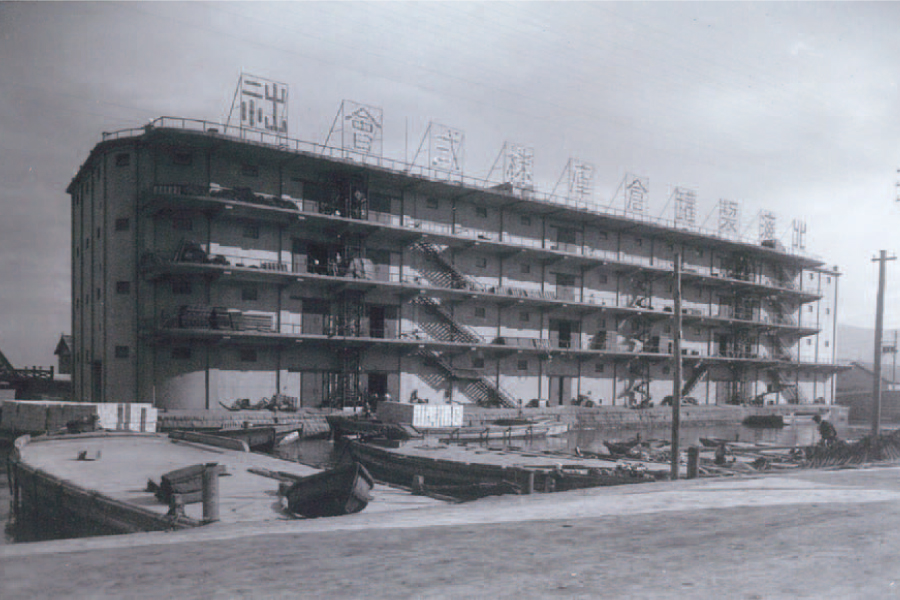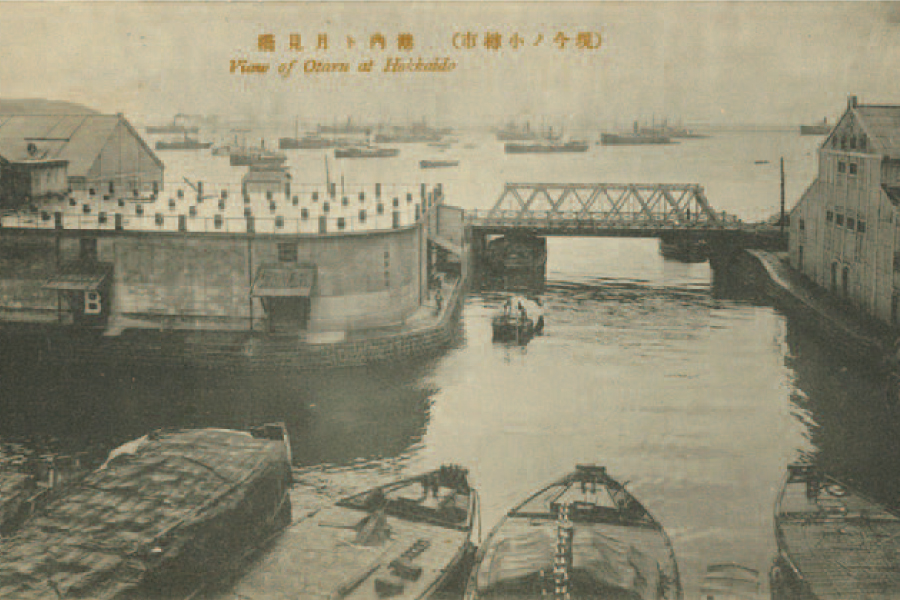
Early Showa Period, Hokkaiseikan Warehouse Company
(The Hyogo Photograph Collection)

Early Showa Period, Hokkai Seikan Otaru Factory No. 3 Warehouse and Tsukimi Bridge
The Hokkai cannery and warehouses are located on a reclaimed island at the northern end of the Otaru Canal and are symbols of Otaru’s industrial heritage. Hokkai Seikan Otaru Factory No. 3 Warehouse was built in 1924 for the Hokkaican Company a year after the canal was completed. The warehouse operated until 2020, when the aging structure became difficult to maintain.
Empty tin cans were stored at the warehouse for packing salmon and crab caught off the coast of Russia’s Kamchatka Peninsula, north of Hokkaido. Tsutsumi Shokai (now the Hokkaican Company) built its first cannery on the Kamchatka Peninsula in 1910, which led to the development of industrial fishing in the Sea of Okhotsk, with large factory ships moored off Kamchatka to process seafood for export.
Under the peace treaty following Japan’s victory in the Russo-Japanese War (1904–1905) fishing rights were granted to Japanese fleets in the Sea of Okhotsk and along the coast of Russia’s Kamchatka Peninsula. The agreement led to a boom in Japanese fisheries moving into the area. Salmon canning peaked in 1937, with some 2.5 million cases of canned salmon (each case held 48 cans) exported by steamship that year—almost 90 percent went to the United Kingdom.
Ample storage space was needed for the large volume of cans, and the four-story warehouse was designed to maximize internal space. It has a total floor area of over 7,000square-meters, most of which was devoted to can storage. Workers used external stairways and decks to move around the warehouse, and cans were transferred between floors via external elevators and spiral chutes.
The warehouse was donated to Otaru City in 2021 and is sometimes open for tours and music events. The exterior, with its distinctive spiral chutes, is illuminated at night.